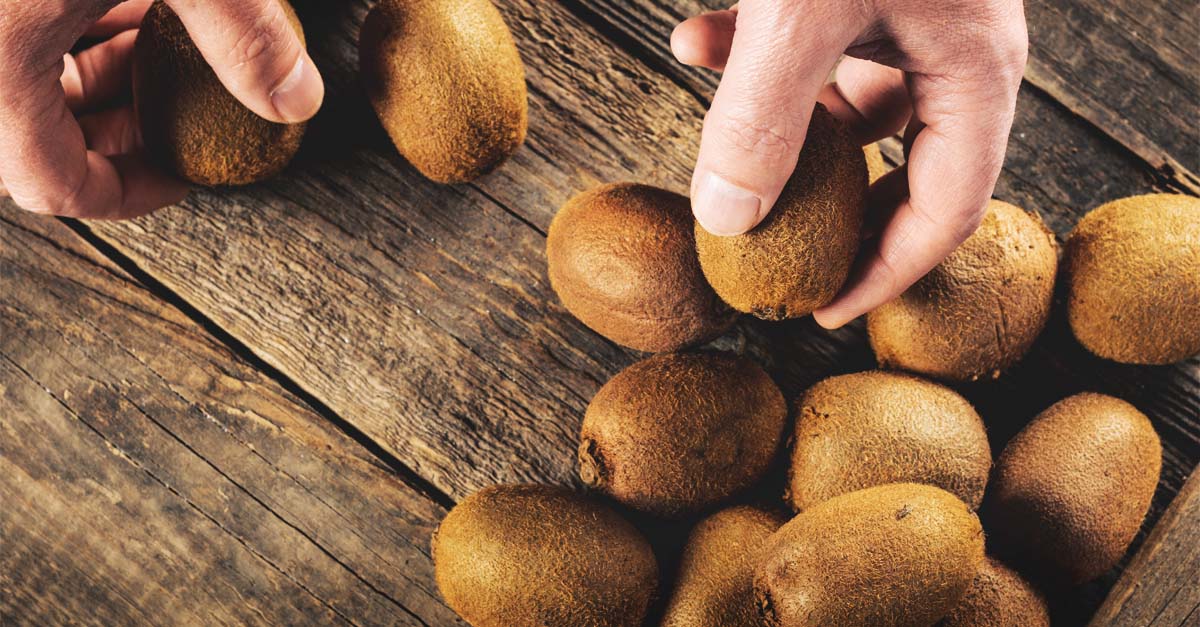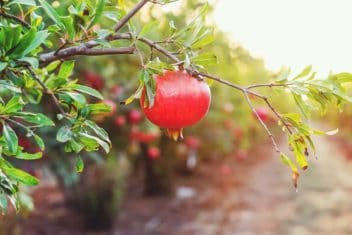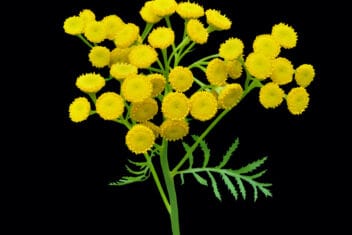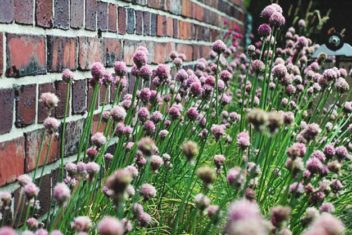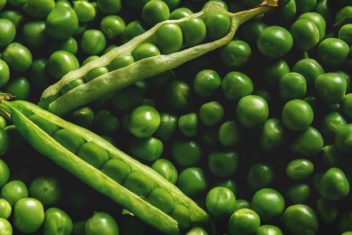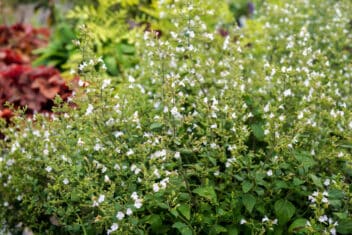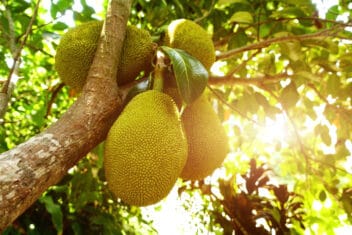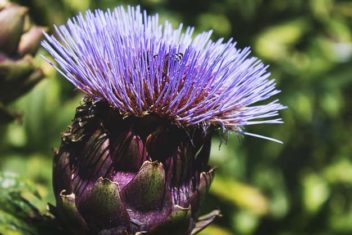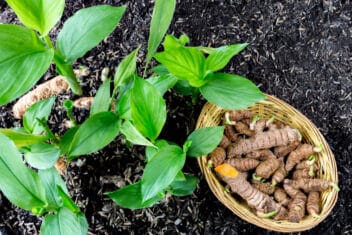Kiwi is one of those exotic fruits that I can’t wait to see in the store because I love them so much. They’re wonderful as a tasty snack, in desserts, chopped into salsa or as a topping for fish. On top of that, many people are growing kiwi for all of its amazing health benefits.
Kiwi is native to China where there are records of it being cultivated as early as the 12th century. In the early 20th century, it began being cultivated and harvested commercially in New Zealand. Kiwi finally made its way to California around 1960.
Kiwi has more vitamin C than lemons and oranges and the fruit is packed with antioxidants. There’s also some evidence that it can assist in sleep thanks to its high levels of serotonin. There are also reports that kiwis may assist in reducing the risk of coronary heart disease because of the high levels of dietary fiber.
If you have IBS or other gut issues like constipation, kiwi is your friend. It has high levels of folate which is great for heart health, gut health and skin.
To top it all off, if you live in the right climate, growing kiwi is relatively easy and the yield is often plentiful. I used to buy kiwi from the store, but now I grow it successfully in my garden – and believe me, fresh kiwi is a revelation.
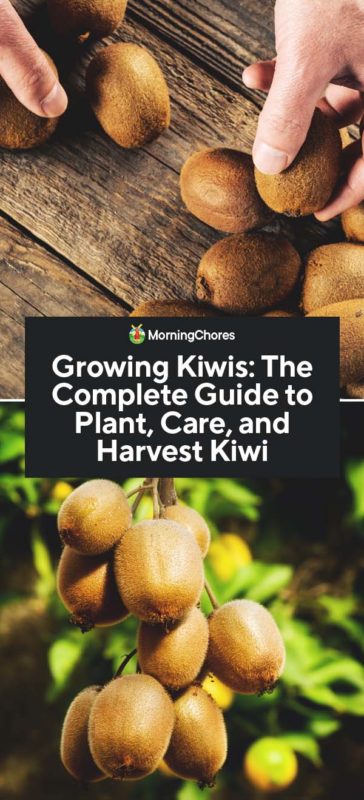
Kiwi Varieties
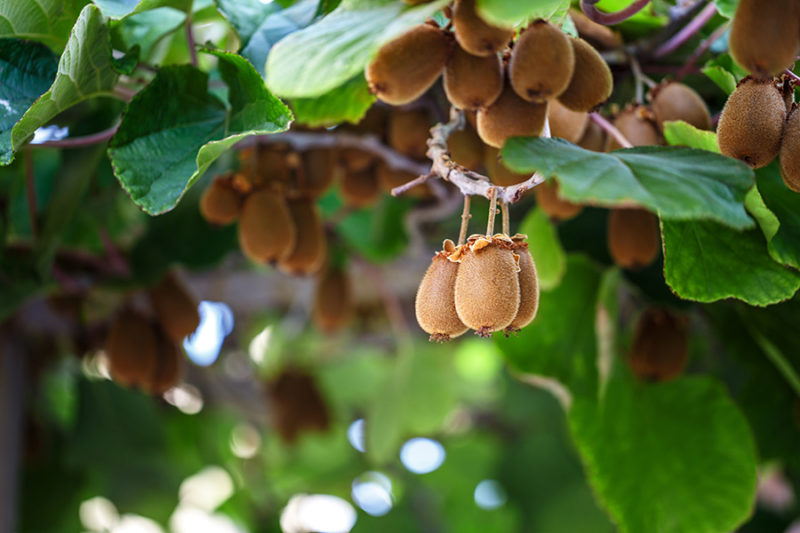
There are around 50 varieties of kiwi. The variety that’s best for your garden depends on your zone, landscape, and space. For instance, some kiwis require extensive support as they can grow 40 to 50 feet long.
There are three types of kiwi – hairy, hardy, and Arctic – each with different sub-varieties that suit small scale or homestead size gardens. Kiwis have been bred over the years to suit many conditions including cold environments, so there’s one for most gardens.
Hairy/Fuzzy Kiwi
- Hayward – This is the most common brown, hairy kiwi sold in stores. It’s quite hardy and good for areas with mild winters. The fruit is large and fleshy.
- Blake – Slightly more prolific than Hayward, but with smaller oval fruit and a little less flavor. I’ve had good luck with Blake and produced a lot of fruit. It’s great for kiwi jam.
- Meander – A common variety similar to Hayward.
- Saanichton – Hardier than Hayward and more fruit, but the center is tough and thick, with less fruit flesh.
Hardy Kiwis
Hardy kiwis were developed for cooler climates. They will tolerate light frosts and areas with a shorter growing season.
- Ananasnaya – Features small fruit that’s slightly bigger than large grapes. This is a great kiwi for the beginner because it’s easy to grow and a prolific fruiter. It’s green and hairless. Great for zones 5-9.
- Geneva – This is a medium fruit that ripens before Annaasnaya, in the middle of the season. Good for zone 5-8. You’ll need a male and a female plant for fruiting.
- Issai – This variety fruits a year after planting. It produces without a male, but if you plant a male and female, you’ll get much more fruit. Issai doesn’t like hot and wet conditions in the summer. Suits zone 6-9.
Arctic Kiwi
These varieties can withstand extremely cold temperatures, as low as -40°F. However, young shoots are frost tender and damage easily.
- Pautske – Vigorous plant with good quality fruit. They’re small, green and hairless and often have red flesh.
- Krupnopladnaya – The largest fruit of the arctic variety, though it does produce less fruit. They’re sweeter than most varieties.
- Arctic Beauty – Said to be the hardiest of all kiwi, this plant tolerates cold temperatures as low as -40°F. It does well even in partial shade, and grows up to 12 feet tall. This variety needs a male for the female to bear fruit. It fruits 1 to 2 years after planting.
How to Plant Kiwi
Zones
Kiwi can grow in zones 5 to 9, but there are some varieties that tolerate zone 3. Check with your local garden center to see which kiwi suits your zone.
When to Plant Kiwi
I’ve always planted my kiwi in spring once the last frost has passed. Although there are varieties that can withstand cold temperatures, the small plants aren’t cold tolerant.
Growing from Seed
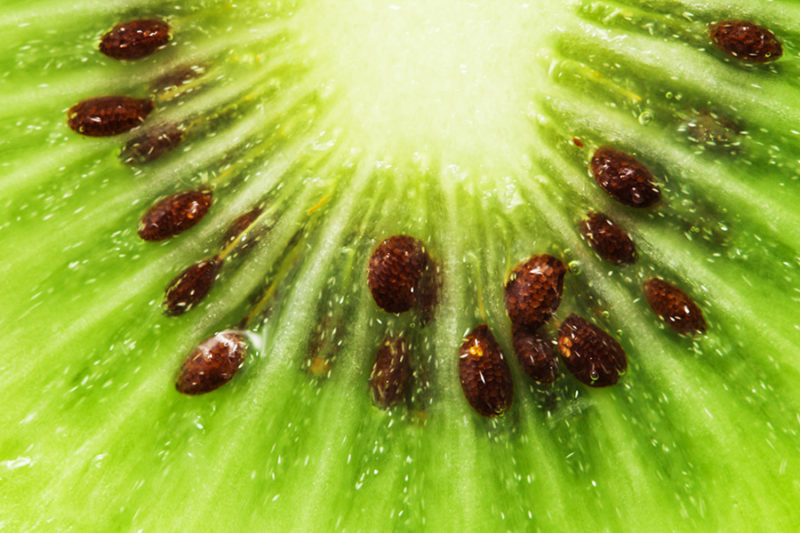
Growing kiwi from the seeds in the fruit is time-consuming, but it can be fun especially for children. Kiwi seeds are tiny and to see the size of the plant that grows from them always surprises my sons.
- Use an organic kiwi if possible as the seeds are more likely to produce a plant that fruits.
- Remove the seeds from the fruit and wash in water in order to remove as much of the pulp as you can, then place in a coffee cup with tepid warm water. Change this water each day for about seven days.
- The seeds will begin to open. They are tiny so you may need a magnifying glass.
- Place the seeds on a damp paper towel before covering it with a plastic container or plastic wrap with air holes. Store in a warm place.
- If germination is successful, you’ll see them sprout in as little as two or three days. Gently plant in little pots with good quality seed mix. The seeds are delicate, so be careful when you water them.
- Plant outside when spring temperatures are warm and frosts have finished. If you plant when the risk of frost isn’t over, use a cloche.
Planting Seedlings
I prefer this method because you need to ensure there is at least one male plant to every eight female plants. Some kiwis are self-fertile, but you get much bigger yields if you have a male plant as well. If you plant a female kiwi, plant a male within 30-50 feet. They don’t have to be right next to each other, but they should be close.
Kiwi trees take a lot of space so be prepared for that. Plant no less than 8 feet apart. They creep, so trail the plant over a fence or trellis that is sturdy, as kiwi will get heavy, especially when fruiting.
Planting in Pots
You can plant kiwi in pots. Just make sure you plant a male and female as you would in the garden. Use good quality potting mix and place the pot against a trellis or wall to enable it to spread. You’ll get fruit, but not the same volume as a fully grown kiwi planted in the garden.
Sun Requirements
Kiwis love the sun, but if you live in a hot area, the plants tend to struggle in the peak heat of the day. In that case, plant where the garden gets some partial shade mid-day. You can also use shade cloth on young plants. Otherwise, give growing kiwis full sun.
Soil Requirements
Free draining soil is a must. When planting, load the soil with plenty of rich, well-rotted organic matter. Kiwis tolerate most pH levels and I’ve never adjusted mine. Ideally, provide kiwis with a pH between 6.0-6.5.
Spacing
You must check the type of kiwi and its potential spread to determine spacing. I’ve planted some kiwi 8 feet apart and some 18 feet apart based on the size of the adult plant.
How to Care for Kiwi
Water Well
Kiwis need plenty of water, but not to the point where their roots get waterlogged, which is why you need free-draining soil. Water well at the roots only, not the leaves, and let the surrounding ground become slightly dry before watering again.
Protect from Wind
Young kiwis need to be staked well, either on a large T-stake or on a trellis. If the winds are strong or dry, use wind cloth while the plants are young. Once they’re fully grown, kiwis are generally strong enough to withstand wind as long as the trellis is robust.
Pruning
Pruning kiwi is a must for maximum fruit yield.
In the first year, cut the side branches off until the kiwi reaches the top of your stake or trellis. Tie the vine to the stake loosely, rather than letting it wind itself around the stake. Once it reaches the top of the support, cut the tip of the kiwi and allow branches to spread out to the sides.
In the winter, prune any laterals that are diseased, twisted or rubbing on others. Kiwi fruit on new shoots on last year’s growth. If left to their own devices, kiwi will become a jumbled mess, so pruning in summer is smart to help keep the plant’s shape.
Fertilizing
I’ve found the most effective fertilizer for kiwi is citrus fertilizer. Apply it in the early spring. You could also use a good quality all-round fertilizer if you can’t get your hands on a citrus-focused one. In late winter, apply lots of well-rotted organic matter.
Mulching
Kiwis appreciate a nice layer of mulch to keep the moisture in. I use straw, but you can use whatever you prefer.
Companion Planting for Kiwi Fruits
Kiwi grows well with a variety of plants. Try:
- Grape
- Geranium
- Currants
- Lavender
- Marjoram
- Marigold
- Lemon Balm
- Grapefruit
- Raspberries
- Catnip
- Blueberries
- Clematis
Don’t try growing kiwis with eggplant.
Common Problems and Solutions for Growing Kiwi
Root Rot
Excessive watering or soil that’s not well-draining causes the roots to sit in water and rot. Your kiwi will start to wilt and look decidedly unhealthy. Water management is key. Also, don’t pile mulch right up to the trunk or stem.
Botrytis or Fruit Rot
When this fungus strikes, your fruit will be covered in a grey mold and it will begin to rot. This usually happens when there’s too much humidity and rain. Use a fungicide to control.
Crown Gall
This is a bacterial disease that enters through wounds into the plant. The plant becomes weak and yield diminishes. The only way to stop this is to prevent injury, so use caution when pruning and working around your kiwi.
Bleeding Canker
If your kiwis have bleeding canker, you’ll see a red discharge on the branches. This is a bacterial disease that can be treated by pruning the branch to remove the canker.
Leaf Rollers
Leaf rollers are little caterpillars that build a silk home on the back of leaves and roll the leaf around it. If you have a few, pick the infected leaves off. If you have an infestation, consider a chemical response. I prefer neem oil mixed with organic pyrethrum.
Japanese Beetles
Japanese beetles are voracious feeders and are a particular problem in the eastern United States. They suck the life from your plant. You can see the results in the leaves where it looks like only the skeleton of the leaf remains. Insecticidal soap is the only remedy when numbers are large.
Harvesting and Cooking Kiwis
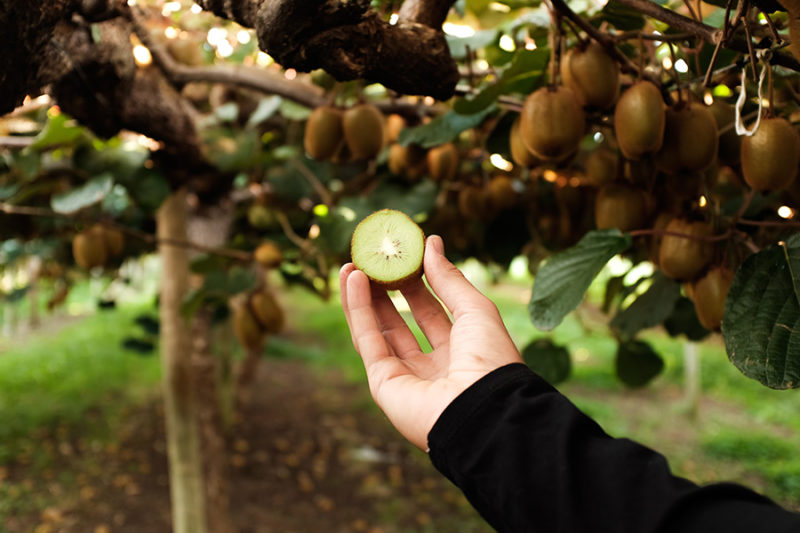
Pick your kiwi when they’re still firm and have reached their mature size, before the first frost hits. If you’re not sure if they’re ready, pull one and cut it open to test. You can’t generally tell if kiwi is ripe by squeezing to test for softness.
Now for the fun part. How do you use your bountiful harvest? Kiwi makes an insanely good sorbet. It’s also a classic option for fruit pizza, fruit salsa, or used as a topic for yogurt or pudding. But don’t be afraid to get creative. Chopped kiwi is amazing on fish and meat.
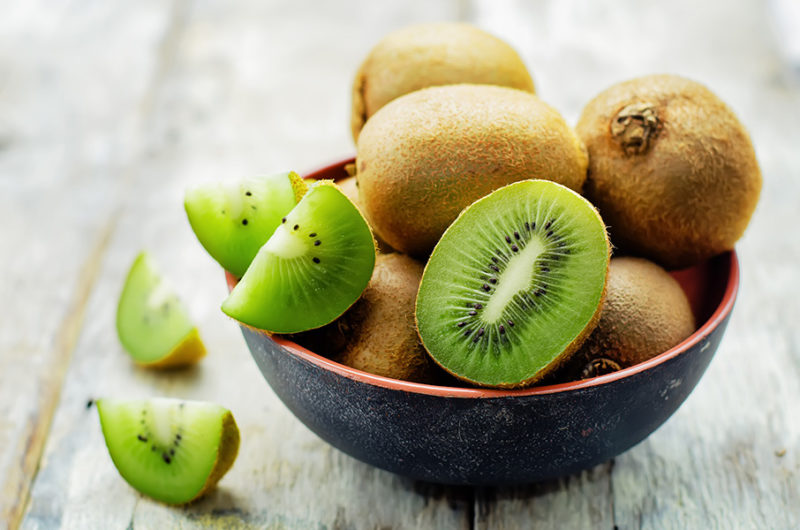
The Bottom Line of Growing Kiwi Fruit
Kiwis are an easy-to-grow fruit and, if you treat them right, they provide you with loads of fruit. Pests are rare, but controllable if attended to early enough. Ensure you choose the right kiwi for your zone and prune efficiently and you’ll be rewarded with a marvelous harvest.
